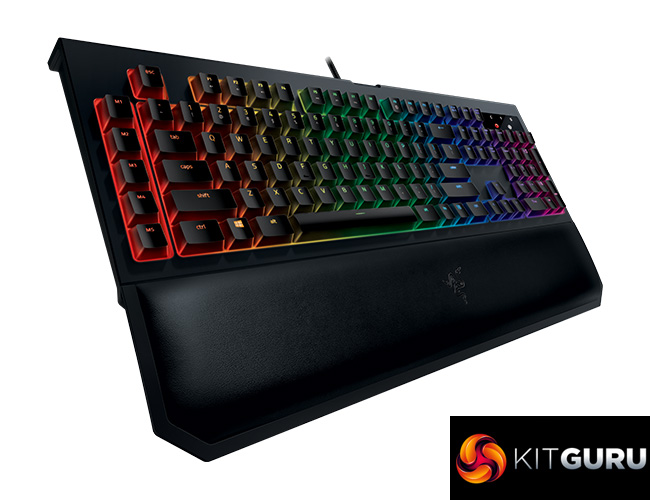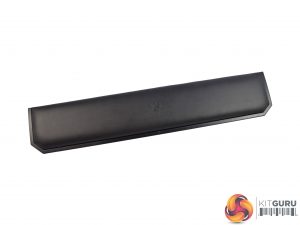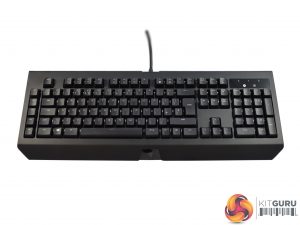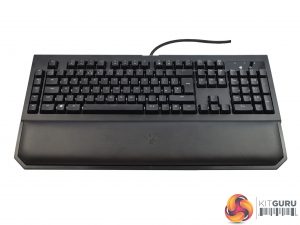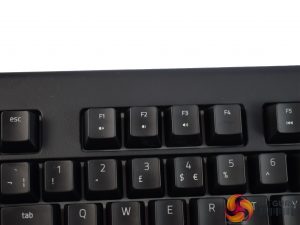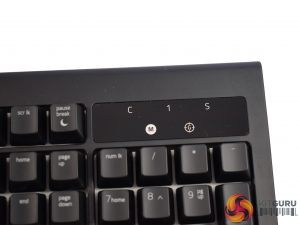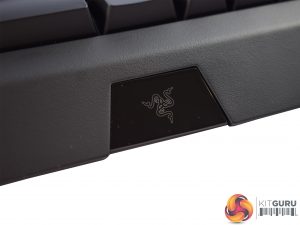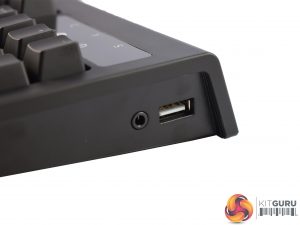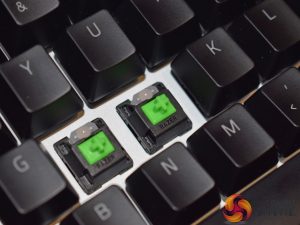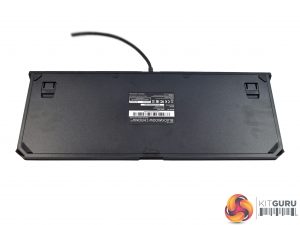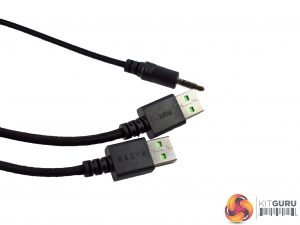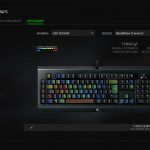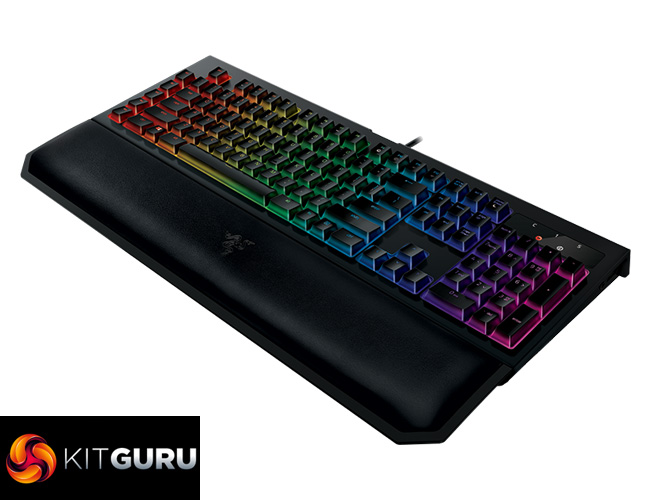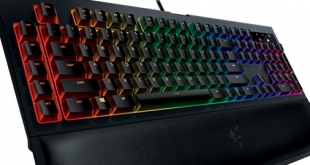
Razer are back with a new flagship mechanical keyboard, inventively named the BlackWidow Chroma V2. Featuring Razer's own mechanical switches, a new wrist rest and the ability to sync the lighting between all your Razer peripherals, could this be your dream keyboard? Read on to find out.
Having recently reviewed two keyboard behemoths in the shape of the ASUS ROG Claymore and the Corsair K95 RGB Platinum, it will be very interesting to see how the Razer BlackWidow Chroma V2 compares. Admittedly, it is priced around £30 less than both of those keyboards, but given it still costs £164.99 it is definitely positioned as a top-end mechanical keyboard. In this review we assess the build quality, features and performance of the BlackWidow Chroma V2 before giving our final verdict.
Specification
- Razer™ Mechanical Switches with 50g actuation force
- 80 million keystroke life span
- Chroma backlighting with 16.8 million customizable color options
- Razer Synapse enabled
- 10 key roll-over anti-ghosting
- Fully programmable keys with on-the-fly macro recording
- 5 additional dedicated macro keys
- Gaming mode option
- Audio-out/mic-in jacks
- USB pass-through
- 1000Hz Ultrapolling
- Braided fiber cable
- Approximate size: 475mm/18.72 in (Width) x 171mm/6.74 in (Height) x 39mm/1.54 in (Depth)
Approximate weight: 1500g/3.31lbs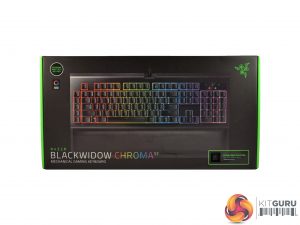
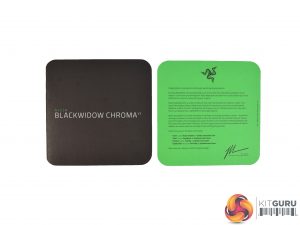
The Razer BlackWidow Chroma V2 ships in a black box, though there is a large and colourful photo of the keyboard visible from the front.
Inside, both a small quick-start guide and a ‘welcome to the Cult of Razer' greeting card are included.
The only other extra is the faux-leather, magnetic wrist rest. More on this on the next page.
Taking our first look at the BlackWidow Chroma V2 (or just ‘V2' from here on), it does look very similar to the original BlackWidow Chroma. That being said, looking closely, the plastic outershell is now slightly textured, whereas the original model has a smooth finish. The font, too, has been tweaked – it is now a bit thinner and less aggressive.
Below we take a closer look at some of the keyboard's features.
Starting at the top of keyboard, volume controls share space with the F-keys. There is also play/pause/skip functionality on the F5-F7 keys.
In the top right-hand corner is a relatively large, glossy panel which is home to 5 LED indicators. These just let you know if caps lock, gaming mode etc are currently active. This panel has been improved over the original BlackWidow model, too, as it is now much clearer and thus easier to tell what is currently active.
At the bottom of the keyboard is a small Razer logo – this is illuminated by RGB LEDs which can be controlled via the Synapse software.
On the right-hand side of the keyboard we find a USB 2.0 pass-through port, as well as a single 3.5mm audio pass-through jack – both are good features to have, but the original model did have both audio and mic jack pass-through ports.
Next, we get a look at the mechanical switches. Razer design and manufacture their own mechanical switches in-house – contrary to popular opinion, these are not just re-badged Kailh switches. They also have an impressive 80m-rated keystroke lifespan, which is actually an improvement from the last-gen 60m-rated switches.
My sample arrived with the tactile and clicky Green switches, while the non-clicky tactile Orange switches are also available. Razer's new Yellow switch – linear and non-tactile – is also an option, but it is only available in keyboards which use the US key layout.
Speaking of switches, included in the box is also a small mechanical switch key chain. It looks just like a keyboard switch with key-cap, and it feels exactly the same, but it doubles as a key chain for all you keyboard aficionados out there.
The last point to mention here is that Razer have also changed the LED housing at the top of the switch – the housing now has a more rectangular shape and this should hopefully disperse the light a bit better.
On the underside of the keyboard we can see that there are four rubber feet to prevent any slipping, while there are also two height-adjustment stands.
Lastly, the braided cable is very thick as it splits off into 3 connectors: 1x USB for the keyboard itself, 1x USB for the pass-through port, and one last connector for the 3.5mm audio jack pass-through.To test the BlackWidow Chroma V2, I used it as my daily driver for over a week. During this time, I used it to play games, edit photos and type my reviews. All-the-while, I factored in its practicality, features and performance to write about here.
Firstly, let's take a look at the Razer Synapse software.
Above you can see a gallery of Razer's Synapse software and all the available options for the BW V2.
While Synapse includes excellent RGB lighting control, macro support and key re-mapping tools, I am most interested in the ‘stats' tab. As you can see above, Synapse can actually track your activity in different games and tell you how many clicks/key-presses you make in each session. It can even create a heatmap of the keyboard to show you which keys you press the most.
All-in-all, I really like the Synapse software. It is annoying that you have to create an online account to use it, but it offers excellent control over all the important areas, while it is also easy-to-use and a good-looking piece of software.
The V2's lighting is also excellent. Razer have added a white baseplate under the keys, just like Cooler Master has done previously, and this really allows the light to spread out and cover the whole of the keyboard, not just the keycaps themselves.
Colours are also very accurate, with the exception of white, though this is simply due to the nature of RGB LEDs – it is not a negative point specific to the V2. I also love the Chroma sync feature which allows you to synchronise the lighting between other Razer Chroma-compatible peripherals.
Listen to an audio comparison of the Razer Green switch vs the Cherry MX Blue switch using the file above.
In terms of physical testing, I enjoyed using the V2 on a daily basis. Starting with Razer's own Green switches, I do think Razer have done a great job here. I love the tactile and clicky response, while – compared to my own keyboard that uses MX Blues – I do feel that the Razer switches are a bit faster, which can definitely help in-game.
There is also the option of the new Razer Yellow switch – however, this new switch is only available in keyboards that use a US key layout, so that is definitely worth noting.
My gaming performance with the V2 was absolutely fine, though. There is a handy ‘Gaming mode' which can be enabled via Fn+F10, and you can configure what this does using the Synapse software. Elsewhere, the V2 features 10-key roll-over which is more than enough for the FPS games I like to play, though maybe some hardcore gamers out there would like to see NKRO (n-key roll-over) instead.
I do have to mention the new wrist rest as well. It attaches magnetically, so it is very easy to clip on or off, while the rest itself is padded with a faux-leather finish. Unfortunately, I found using it to be slightly uncomfortable as the padded area of the rest is quite tall, which forced my wrist to sit higher than I would have liked. If the wrist rest had more of an angle to it – like the Corsair K95 RGB Platinum's wrist rest – it would not have been a problem, but it is actually quite flat. Maybe over time the padding would depress slightly, but for the week I used it, I was not too happy with the wrist rest.
Elsewhere, I was also disappointed by the lack of the dedicated multimedia controls. I would really expect a keyboard of this size (and price) to have dedicated media controls. My suggestion to Razer would be to ditch the LED indicator panel in the top right-hand corner of the board and replace it with dedicated media keys. I think this panel is unnecessarily large and that space could be better used with some play/pause/skip buttons and a volume wheel.
Furthermore, while the build-quality is very good thanks to the internal metal frame that Razer have used, I do think the matte-black plastic outershell lacks the premium look and feel of an all-aluminium keyboard. Given HyperX were able to manufacture a steel keyboard for £99 with their Alloy FPS, I really feel the V2 should have a metallic frame, especially when you consider Razer are charging £164.99 for this keyboard.
My final complaint is perhaps the most significant – while Razer have changed a few minor areas of the keyboard, when compared it to the original, I do not really think the changes can justify the increased cost. For example, Razer have changed the font, the plastic outershell is now textured, and the LED housing is more rectangular – but these changes are far from revolutionary. In my opinion, the only major difference is the addition of the magnetic wrist rest, and even that is a bit disappointing. Considering the V2 costs £164.99, while the original can be found on Amazon for £123, I am not sure Razer have done enough to justify the extra cost.All-in-all, the Razer BlackWidow Chroma V2 is a mixed-bag.
When you take it on its own, it is a perfectly decent keyboard. I really like Razer's own mechanical switches, while the Chroma RGB lighting is truly excellent. The Synapse software is also top-notch, too – it offers plenty of control options and you can even track your activity during gaming sessions.
However, when you compare this V2 BlackWidow Chroma to the original model, which can now be found for around £120, I do not think Razer have made enough significant changes to just the extra outlay. Sure, the font is different and the LED indicator panel is now easier to see, but I am not sure these updates would convince anyone with the original BlackWidow Chroma to upgrade.
Furthermore, I do feel that the BlackWidow Chroma V2 seems a bit lacking when it is compared to the competition. For example, it lacks the dedicated multimedia keys of the Corsair K95 RGB Platinum, while its plasticky outshell is also a bit disappointing when you consider the ROG Claymore has a stylish all-aluminium frame.
Admittedly, the K95 RGB Platinum and ROG Claymore do cost around £30 more than the BlackWidow – that being said, we take the view that if you are considering spending £165 on a keyboard, you can probably find the extra £30 to get one of those other flagship boards.
All of that aside, I still feel that £165 is a bit much for this keyboard. Given the minor changes Razer have made to the BlackWidow Chroma, I think a fairer price would be closer to £130.
As such, we must conclude this review. Taken in isolation, the BlackWidow Chroma V2 is a solid keyboard – but when it is compared to both its predecessor and its main rivals, it starts to look less appealing. If you can find one on offer it is definitely worth considering, but if you currently have £165 ready to be spent on a high-end keyboard, we would recommend looking at either the Corsair K95 RGB Platinum or the ROG Claymore instead.
You can buy one from Overclockers UK for £164.99 inc. VAT HERE.
Pros
- Lighting is excellent.
- USB and audio pass-through ports.
- Synapse is as good as ever.
- I really like Razer's own mechanical switches.
Cons
- Aside from the wrist rest, the only differences between the V2 and the original model are pretty minor.
- Lacks dedicated multimedia keys.
- Its predecessor can be found for £40 less.
KitGuru says: If you can find the BlackWidow Chroma V2 for closer to the £120-130 mark, it is definitely worth considering as it is a solid keyboard. However, for £165 there is a lot of competition on the market right now.

Be sure to check out our sponsors store EKWB here
 KitGuru KitGuru.net – Tech News | Hardware News | Hardware Reviews | IOS | Mobile | Gaming | Graphics Cards
KitGuru KitGuru.net – Tech News | Hardware News | Hardware Reviews | IOS | Mobile | Gaming | Graphics Cards


